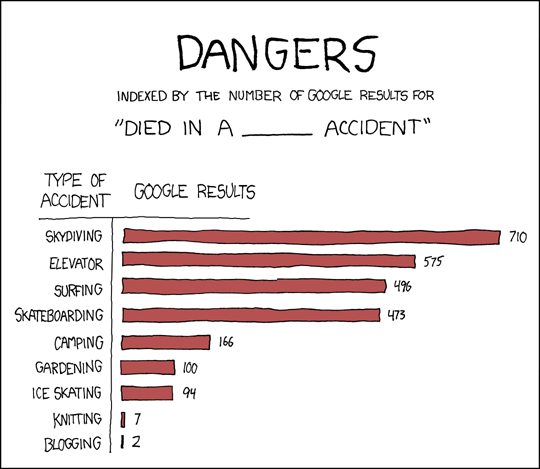 So I’m working on a project for my job job (I’m not quite able to support a family on blogging–yet), and have been wrestling with a biggish enterprise software package. As you’d expect, there’s quite a bit of convolution to it–things like hundreds of database tables with nondescript names like T001, T0043, H3222, etc. (Was this thing designed to run on AS400?) It’s actually not that big of a deal. A part of me secretly enjoys stuff like that. It’s like a giant sudoku, except instead of 1-9 the numbers go 1-100. And no matter how much of the puzzle you solve, there’s still more to work on. That means no boredom, provided you like puzzles.
So I’m working on a project for my job job (I’m not quite able to support a family on blogging–yet), and have been wrestling with a biggish enterprise software package. As you’d expect, there’s quite a bit of convolution to it–things like hundreds of database tables with nondescript names like T001, T0043, H3222, etc. (Was this thing designed to run on AS400?) It’s actually not that big of a deal. A part of me secretly enjoys stuff like that. It’s like a giant sudoku, except instead of 1-9 the numbers go 1-100. And no matter how much of the puzzle you solve, there’s still more to work on. That means no boredom, provided you like puzzles.
 Most packages of this size were designed and coded up long long ago in a galaxy far far away. Any growth, expansion, or enhancements they’ve undergone were probably done piecemeal with who knows who taking over and steering the thing onto the latest technology at each fork in the road. That’s bound to happen to any project this size I guess. It’s sort of like what you’d expect to happen to a person who was reasonably good looking in their youth and, as they aged, had countless plastic surgeries performed by different doctors of varying abilities. The individual pieces may be really nice, but put them together and you have an odd colored face mess.
Most packages of this size were designed and coded up long long ago in a galaxy far far away. Any growth, expansion, or enhancements they’ve undergone were probably done piecemeal with who knows who taking over and steering the thing onto the latest technology at each fork in the road. That’s bound to happen to any project this size I guess. It’s sort of like what you’d expect to happen to a person who was reasonably good looking in their youth and, as they aged, had countless plastic surgeries performed by different doctors of varying abilities. The individual pieces may be really nice, but put them together and you have an odd colored face mess.
Usually these type products involve a lot of RTFM.
Don’t get me wrong…I like to RTFM. My willingness to RTFM means I’ll probably never be out of a job for long unless I want to be. You could say I make a living Ring-TFM. But please, large software corporations who charge hundreds of thousands of dollars for your products, make the manuals readily available.
One of the manuals I was reading this morning referred to another manual–the “Installation and Tuning Guide”. Like any good manual reader working for a company that’s shelled out some bucks for this pricey behemoth, I used the login for our company (they don’t give the info to just any old body), and searched for this manual on their site. No dice. So I searched the support base to see if anyone else had trouble finding it. That didn’t work either. I did find two other manuals–one which whose title led me to believe it was relevant but wasn’t, and the other to the last version of the same product.
So I asked my boss if they’d provided a DVD, pack of CDs, or even physical books when we bought the product. Nope. But he was able to find the manual I needed nonetheless. Guess where…
Google.
Freaking Google found it, even though their own search engine on their own site that is available only to customers who paid for support couldn’t. Now, not only am I irritated that it couldn’t be found on their site, I also feel like an idiot for not trying Google FIRST.

 I’d expect the number of publishers enrolled in the AdSense program to go up (Go here to
I’d expect the number of publishers enrolled in the AdSense program to go up (Go here to 



